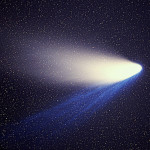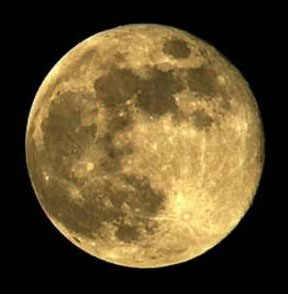
Comet ISON Update
As we wrote last month, Comet ISON was to make its closest approach to the Sun on November 28, 2013, which was Thanksgiving Day in the United States. The comet flew very close to the Sun and thus faced the Sun’s tremendous gravitational and radiation forces. As we stated, it was impossible to predict what would happen to the comet upon its encounter with our nearest star. Unfortunately, the latest reports are that the Sun has pretty much destroyed this comet, which many astronomers had dubbed the “comet of the century.”
But do not fret: There’s still plenty to see in the night sky this December!
The planet Venus is particularly bright this month. In fact, if you observe Venus on a clear, dark night (without moonlight and far from city lights) while snow remains on the ground, hold your hand about a foot off the ground: You might just see Venus casting a shadow on the ground! Venus is the really bright ‘star’ you will see above the west-southwestern horizon after sunset.
Meteor Shower
One of the best meteor showers of the year occurs this month: The “Geminid Meteor Shower,” s0-called because the shooting stars all appear to fly out of the constellation Gemini.

The Geminids are active between Dec. 4 and 17, and peak on Dec. 14. But, because the Moon will be fairly bright the night of Dec. 13/14, the best time to see the Geminids that night will be during the hour, or so, before sunrise. However, you should still see shooting stars no matter what time of the night you look for them in the Dec. 4-17 time period.
No telescopes or binoculars required! To observe shooting stars, the best thing to do is lie down on a lawn chair or blanket and look up! Depending on where you live in the world, be sure to bring along plenty of winter clothing or mosquito repellant!

Follow the Moon through the Constellations
Did you know you can use the Moon to help identify constellations (areas of the night sky) like Aries, Taurus and Sagittarius? Follow us on Twitter where we Tweet what constellation the Moon is in each night. (Note that during certain times of the month, the Moon will not appear during the night hours, and so we do not Tweet info about the Moon at those times of the month.)
Finding your star in the night sky
Stars are located within constellations, which are just areas of the night sky. Scorpius, Aries and Taurus are examples of constellations. Your Name A Star Live Star Certificate displays the name of your constellation. You can use our online World Constellation Guide to determine if you can see your constellation during the evening hours (between sunset and midnight). Of course, you’ll need a telescope to see your star. But you can see your constellation without the use of a telescope. You can also find your constellation by using our Virtual Planetarium™ astronomy software. A planisphere is another useful device.